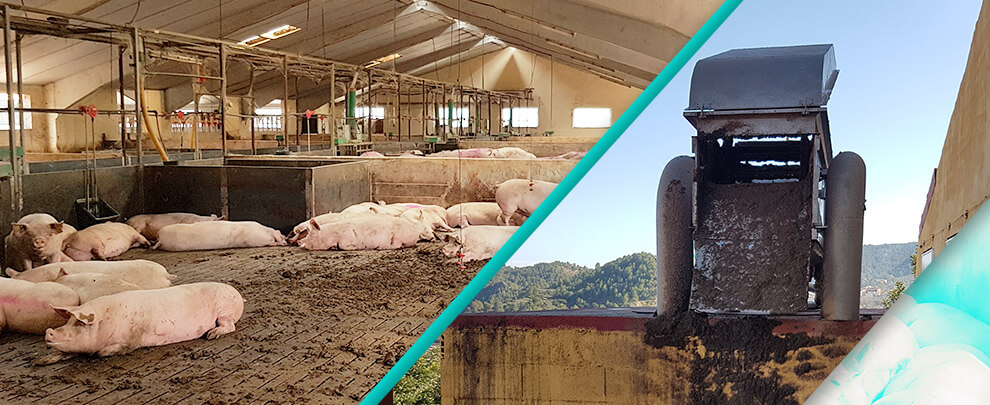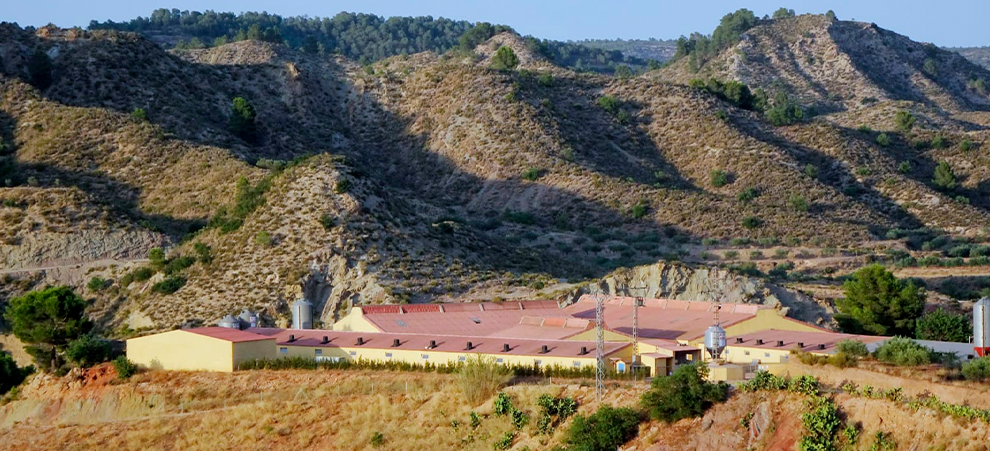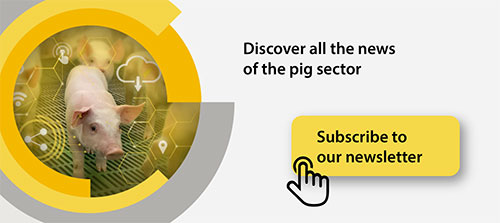Blog
Blog

Carlos Albuixech: "Tecnapur is a straightforward, low-consumption system"
29th October 2019 - Success stories
Carlos Albuixech has been at the helm of his family's pig farming operation for over 30 years. It was in 1986, after completing his vocational training, that Carlos fully committed to working on the farm. Some years later, in 2008, he relocated the farm to meet biosecurity standards—an initiative that clearly reflects his commitment to sustainability. This philosophy led Carlos to implement on-site separation of the liquid and solid phases of slurry, which allows the same amount of slurry to be managed with up to 20% less land.
What is the origin of this farm?
My father was the one who started the farm. He was a builder and had worked for many years on construction projects in Germany. When he returned, his passion for livestock farming led him to decide to build his own farm. At first, he intended to raise cattle, but once everything was set up, he switched to pig farming. From 1976 until today, we have kept the business going.
How is the farm organized?
We currently have 749 sows housed in an L-shaped building, with separate areas for farrowing, gestation, and breeding. In addition, we have another independent building from which the animals are later sent to fattening facilities—a stage we do not manage on our farm. For that, we work with Ingafood, the Nutrico multinational, which is responsible for collecting the animals and taking them to the next phase.

The farm of Carlos Albuixech, located in Quesa (Valencia), has 184 mothers and 2,100 weaning places.
How long ago did you decide to install a mechanical slurry separation system? Why did you make this decision?
In 2008, I decided to move the farm two kilometers from Quesa in order to enhance biosecurity measures. Beyond complying with regulations, my goal was to have a self-sufficient farm with a future-oriented plan. So, I began considering the option of separating livestock waste, since in my work model I frequently use slurry mixed with water to irrigate alfalfa and other crops. If I didn’t separate the slurry, I had to mix it with water manually and work with a tanker. That same year, at the Zaragoza Fair, I discovered Rotecna’s TecnaPur system. I had already been working with the company for several years, and they had told me about it. When I saw how simple the system was, I decided to go for it—and honestly, it works very well. We're now evaluating the installation of the next phase: the physicochemical treatment. My idea is to complete the cycle, as I’d like to install a sprinkler irrigation system to use less water. I have one hectare of alfalfa, a crop that needs a lot of water and nutrients, and slurry covers this need. When I installed the first phase of TecnaPur, I already designed the layout with the idea of adding the second phase in the not-too-distant future.
Why did you choose the TecnaPur Solid Separator by Rotecna?
I had several offers from other systems on the table and started comparing budgets. The issue was that all the prices—including maintenance costs—were very high, and the machinery seemed too sophisticated. As I mentioned earlier, Rotecna presented the TecnaPur system to me at the Zaragoza Fair, where I was able to see its simple mechanics and observe how it worked.
What other advantages would you highlight about the TecnaPur system compared to others on the market?
Aside from its simple mechanics, it has low maintenance and energy consumption costs. It’s important to consider minimal energy use, since slurry treatment takes many hours. Other aspects that convinced me were the technical support, the warranty, and the personalized attention.
How many cubic meters of slurry do you treat per day?
Per week, we treat around 60,000 cubic meters. As for solids, we obtain between 6 and 7 tons. These results are due to the entire production model on my farm, as we have Rotecna's level valve installed, which results in minimal water loss—a significant saving.
How many different facilities does the slurry treated by the separator come from?
It comes from the farrowing area, the gestation room, the breeding phase, and finally, the weaning building. In other words, the slurry comes from four rooms. The replacement section isn’t connected to the system because it’s located farther away from the rest. In that case, I extract the slurry with a tanker and add it to the lagoon. With this procedure, I can remove up to three tankers per month.
How is the slurry treated using the separator?
A pump pushes the slurry from the aforementioned breeding barns into a chamber with a flow regulator, which can be adjusted depending on the density of the slurry. This allows the same system to treat both thick and liquid slurry without the need for pre-filtering ramps to concentrate low-solid-content slurry. This reception chamber is equipped with a plastic and unwanted solids retention system, so we avoid installing grinding pumps, and this helps us produce high-quality compost without contaminating the soil with plastics from ear tags, catheters, etc.
Then, the slurry passes through a double-press and scraper sieve system with round holes that prevent animal hair from passing through. The system is made of plastic, so friction with metal parts is minimal, resulting in lower maintenance and energy costs.
From the initial volume, what percentage of each fraction do you get?
The separation process allows for a reduction of up to 15% of the slurry’s volume. For every 1,000 liters, we obtain 150 liters of solid fraction with 20–25% dryness and 850 liters of effluent. The solid phase is odorless and retains up to 20% of the total Kjeldahl nitrogen (TKN), 50% of the total phosphorus (TP), and 20% of the potassium (K) from the original slurry. In short, it separates up to 55% of total solids.
What do you do with each of the fractions?
The majority of the slurry I obtain is liquid, and I use it for irrigating crops and alfalfa. On the other hand, I give the solid fraction to different people in the village, as most people in Quesa have crops and use it as fertilizer. This is ideal for me because they come to collect it directly from the farm, so I don’t have any transport costs or need to deliver the slurry to a storage site.








